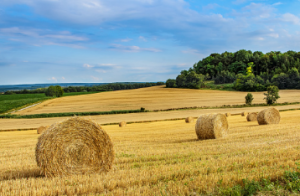Advantages of Baler Twine
When it comes to the use of baler twines in hay baling, you have a lot of different options available to you. These twines come in different bundle types and can be reused and recycled. It means that you can reduce your landfill waste and reduce your tangles.
 Durability
Durability
The durability of baler twine is an important consideration when hay baling. Farmers want to pack their bales as tightly as possible. If their bales are not tightly packed, the twine may rot too quickly, leaving their bales more susceptible to spoilage. To ensure this, farmers should use stronger twine.
Durable baler twine helps farmers increase their yields. The twine should be UV protected and thick enough to hold the bales together. It should also be durable enough to withstand 500 pounds of bales. In addition, it should be UV-protected to prevent fading.
There are two types of baler twine on the market: polypropylene and sisal twine. Polypropylene is more durable and resistant to rot. Polypropylene twine is suitable for bales left in the field or handled often. However, poly twine is not biodegradable, so it can end up littering feedlots for years.
The durability of baler twine is an important feature when choosing twine for hay baling. For instance, New Holland plastic twine is engineered to last for 18 months in the field. It can also be used for silage baling, which saves time and money during the silage production process. The material can be purchased online or at a local feed store.
Besides being durable, baler twine is very easy to use. It makes hay baling easier and faster. Moreover, baler twine is easy to store.
Biodegradability
There are several benefits of using biodegradable baler twine in hay baling. Not only is this type of twine biodegradable, but it is also insect-resistant. Additionally, it is uniform in weight and is ideal for baling. Biodegradable baler twine is available in sisal and polypropylene varieties.
The Biodegradability of baler twine makes it possible to leave the bales in fields as feed. It means you don’t have to worry about the twine tangling around animals or wagon wheels. And, unlike traditional twine, the twine is also recyclable.
The most effective hay baling technique depends on the type of hay. Some hay balers use twine, while others use a net wrap. The choice depends on the forage type, location, and time. Net wrap is better than twine in most cases. Also, net wrap is a better choice than twine for hay storage.
Netwrap is an alternative to plastic wrap. It is more cost-effective and prevents bales from stretching. In addition, it also preserves the bale’s shape. It is also more uniform and stable in storage conditions. Netwraps also tend to be more resistant to rodent damage.
Another option is solar-degradable twine. It combines the advantages of twine made from sisal and synthetic twine. It has a higher storage life before decomposition. However, it can be expensive as it takes 20-30 turns to wrap a bale. However, the time saved in wrapping a bale helps offset the additional expense of solar-degradable twine.
Cost
When choosing twine for a baler, many factors should be considered. For example, quality twine will be very strong. However, it also needs to be flexible and soft. These factors will increase the lifespan of the twine and reduce its cost.
While you may not need twine, using plastic wrap will make your job easier. In addition, choosing a biodegradable twine will reduce the waste you produce. You can even purchase twine that repels rodents and insects. Finally, while the cost of baler twine is high, you can save money using a different material.
Tracking each bale
This method can be beneficial for tracking each bale in hay baling. A small identification tag attached to each bale can record its weight, moisture content, hay quality, and field position. Then, a microprocessor in a baler can coordinate and store the information.
Tracking each bale can help farmers keep their stacks and shipments consistent. It can also help them keep track of hay on hand. The tags are attached to baler twine, and a small microchip is encased. When tied, the antenna and microchip are wrapped around the twine to track each bale. The microchip stores information on each bale, including the date and time of baling, the average moisture content, and weight.